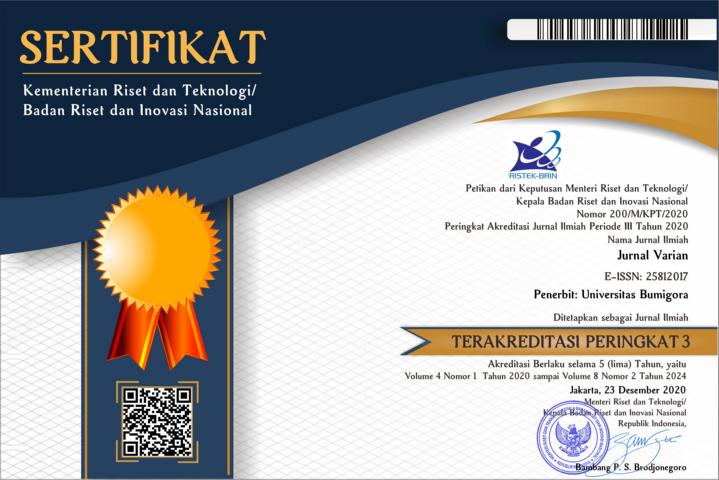The Study of Symbolic Interaction of Funeral Tradition on Ethnic Chinese in Lombok
Abstract
There are various burial cultures in Indonesia, including the Chinese ethnic burial culture. What is interesting in almost all burial cultures is the cultural heritage that has been passed down through generations. The question is how actually the ceremonial Chinese ethnic funeral ritual is, and what the symbols in the ethnic Chinese funeral ritual mean. This research provides an answer solution. This research is a qualitative research. The results of the study concluded that before the funeral ritual is carried out, younger family members pay their respects to the older deceased. During the funeral ritual, the next of kin accompany the vehicle carrying the body to the burial or cremation site, on foot, if the burial place is relatively close, or by vehicle if the burial place is far away. During the funeral, flowers, offerings, food and burnt incense are served. The culture of the Chinese funeral ritual was based on belief as a form of human relations with the creator of life and also as a way to maintain the symbol of family or relatives with the deceased and to bear the sins of the deceased.
References
Crowder, L. S. (2000). Chinese Funerals in San Francisco Chinatown: American Chinese Expressions in Mortuary Ritual Performance. The Journal of American Folklore, 113(450), 451.
Farias, P. L., & Queiroz, J. (2017). Visualizing triadic relations: Diagrams for Charles S. Peirce’s classifications of signs.
Information Design Journal, 23(2), 127–147.
Giordimaina, A., Vries, K. De, Flood, S., & Gillis, A. (2009). Death in Chinese Culture final paper, pp. 1–10. Michigan: University of Michigan.
He, Q. (2016). Spectacular Death: Sheng Xuanhuai’s Funeral Procession in 1917. Journal of Historical Society for Twentieth-Century China, 41(2), 136–158.
Lin, G. (2013). From ″ Dying without a Burial Place ″ to ″ Resting in Peace ″: Research on the Reform of Chinese Funeral Service System under the Four-dimensional Visual Threshold. Journal of Zhejiang University of Humanities and Social Sciences, 3(1), 1–2.
Pasacreta, L. J. (2005). White Tigers and Azure Dragons : 0verseas Chinese Burial Practices in The Canadian and American West.
Sankar, L. V., Hock, D., Neo, J., & Rycker, A. De. (2016). Chinese Culture and Customs in Peranakan Funerals in Malaysia and Singapore. The Journal of the South East Asia Research Centrefor Communications and Humanities, 8(1), 17–36.
Thornbury, C. (2011). Peirce ’ s General Theory of Signs. Journal of Institute of Education of London, 31(3), 49–57.
Toulson, R. E. (2013). The meanings of red envelopes : Promises and lies at a Singaporean Chinese funeral Rent with DeepDyve. Journal of Material Culture, 18(2), 155–169.
Widmeyer, G. R., & Arbor, A. (2003). The Trichotomy of Processes: a Philosophical Basis for Information Systems. Australian Journal of Information Systems, 11(1), 3–11.
Wu, X. (2015). The Rites of Mourning in Archaic and Classical Greece and in Pre-Qin China. Fudan Journal of the Humanities and Social Sciences, 8(6), 235–270.
Yakin, H. S. M., & Totu, A. (2014). The Semiotic Perspectives of Peirce and Saussure: A Brief Comparative Study. Procedia - Social and Behavioral Sciences, 155(1/2), 4–8.
Yick, A. G., & Gupta, R. (2012). Chinese Cultural Dimensions of Death, Dying, and Bereavement: Focus Group Findings. Journal of Cultural Diversity, 9(2), 34–42.
Zunzhi, L. (2014). A Brief Analysis of Funeral Rituals and Related Material Culture in Han Dynasty. Nankai Journal, 3(01), 21–22.


















